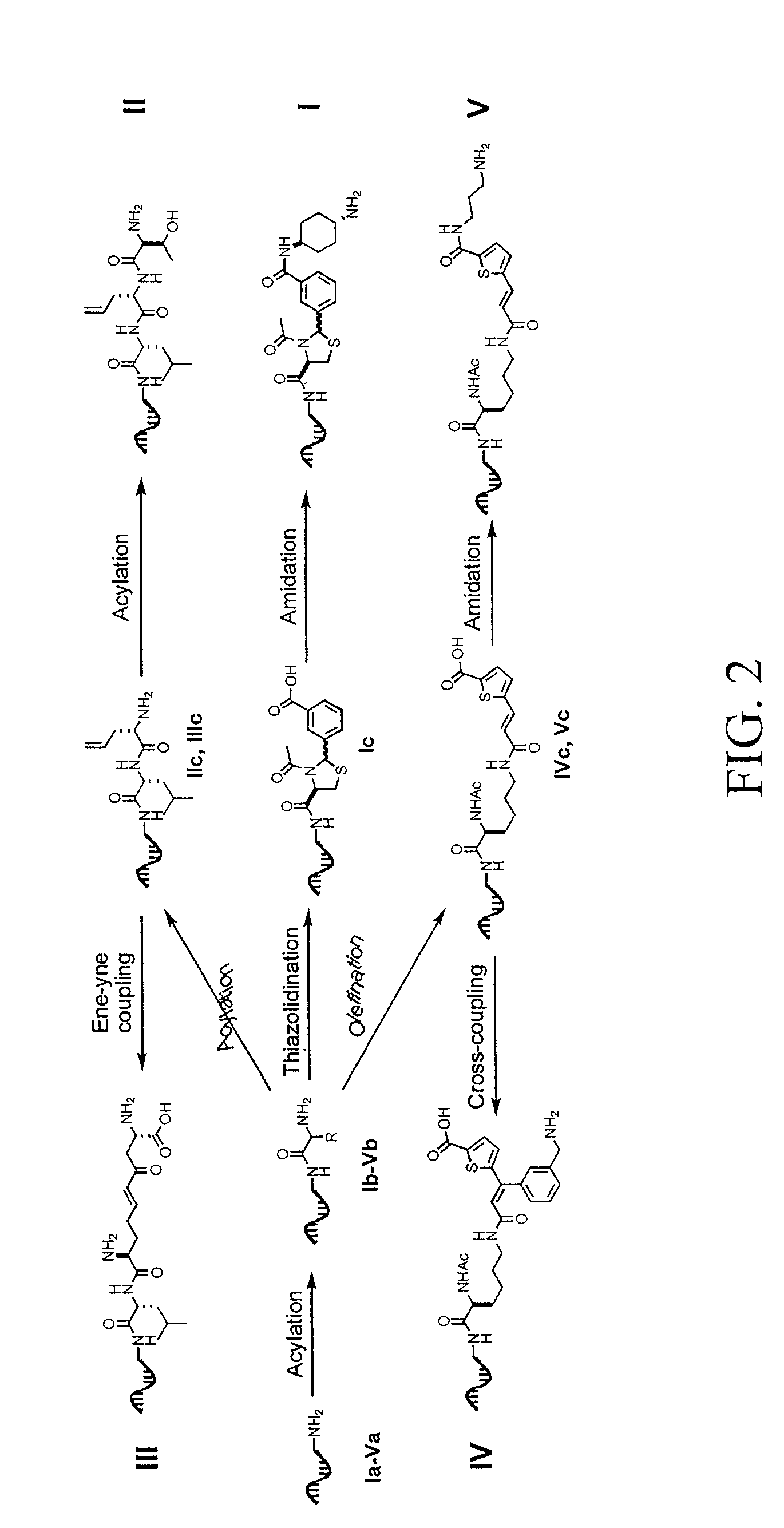Iterated branching reaction pathways via nucleic acid-mediated chemistry
a branching reaction and nucleic acid technology, applied in the field of nuclear acidmediated chemistry, can solve the problems of limiting the diversity of structures that can be created, not being able to direct a specific fraction of beads, and being unable to purify unreacted support-bound starting materials away
- Summary
- Abstract
- Description
- Claims
- Application Information
AI Technical Summary
Benefits of technology
Problems solved by technology
Method used
Image
Examples
example 1
Small Molecule Diversity Accessed Through Iterated Branching Reaction Pathways Enabled by DNA-Templated Synthesis
[0154]Nucleic acid mediated synthesis permits multiple, otherwise “incompatible” reaction types to occur in a single reaction vessel (Calderone et al. (2002), ANGEW. CHEM. 114: 4278; Calderone et al. (2002) AGNEW. CHEM INT. ED. 41: 4104) and also permits sequence-programmed subsets of reaction intermediates to be directed to specific reagents. These properties were integrated in this Example to perform DNA-templated synthesis of a highly diverse collection of molecules using iterated branching reaction pathways, in which intermediates undergo different types of reactions in each of two distinct steps. These findings demonstrate the promise of using iterated branching reaction pathways programmed by DNA sequences to allow access to small molecule diversity that would be difficult to create using standard solid-phase, split-pool synthesis.
[0155]To implement the concept of i...
PUM
| Property | Measurement | Unit |
|---|---|---|
| molecular weight | aaaaa | aaaaa |
| pH | aaaaa | aaaaa |
| pH | aaaaa | aaaaa |
Abstract
Description
Claims
Application Information
 Login to View More
Login to View More - R&D
- Intellectual Property
- Life Sciences
- Materials
- Tech Scout
- Unparalleled Data Quality
- Higher Quality Content
- 60% Fewer Hallucinations
Browse by: Latest US Patents, China's latest patents, Technical Efficacy Thesaurus, Application Domain, Technology Topic, Popular Technical Reports.
© 2025 PatSnap. All rights reserved.Legal|Privacy policy|Modern Slavery Act Transparency Statement|Sitemap|About US| Contact US: help@patsnap.com



